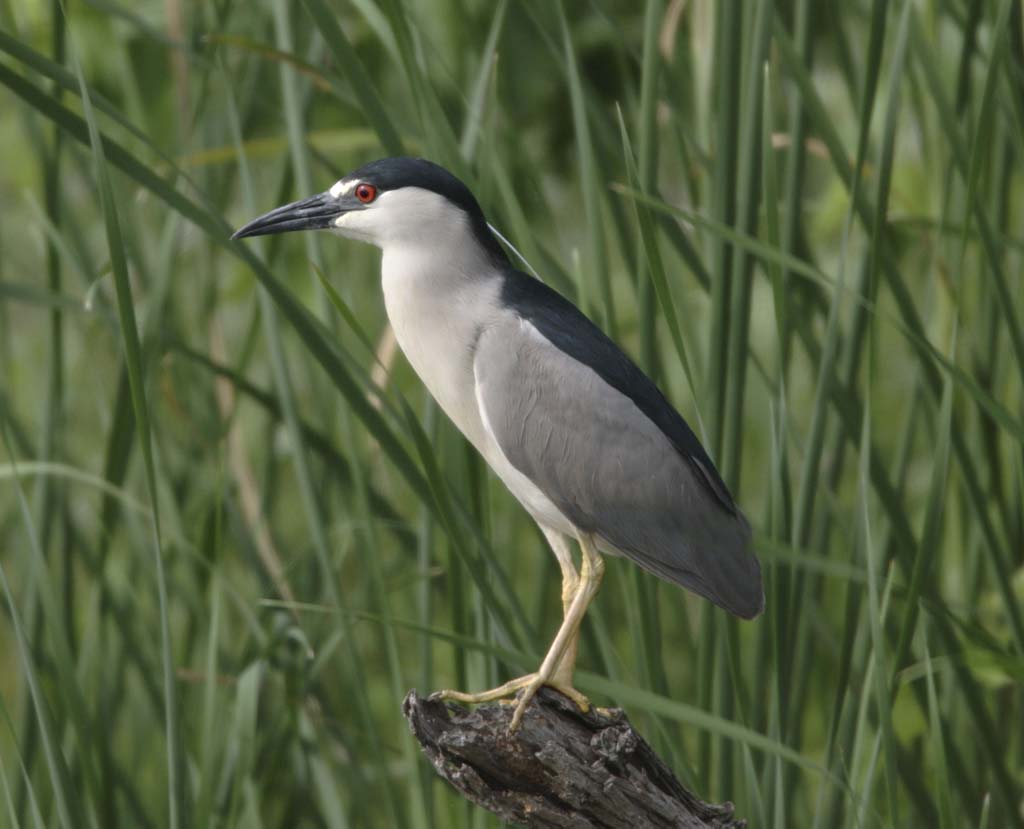
Nycticorax nycticorax
SUBFAMILY
Ardeinae
TAXONOMY
Ardea nycticorax Linnaeus, 1758, Europe. Four subspecies
OTHER COMMON NAMES
English: Night heron; French: Bilhoreau gris; German:
Nachtreiher; Spanish: Martinete.
PHYSICAL CHARACTERISTICS
A stocky dark gray and white heron with a distinctive glossy
black bill, crown, and back. Length is 22–25.5 in (56–65 cm);
weight is 18.5–28 oz (525–800 g). During breeding it develops
white head plumes that may reach 10 in (25 cm) long. It has
relatively short legs that do not extend much beyond the tail
when in flight. Juveniles are cryptic gray-brown with buff and
white spots above and stripes below.
DISTRIBUTION
Occurs across the temperate and tropical world from North and
South America, Europe, Africa, and Asia to the East Indies.
HABITAT
Typically found along the vegetated margins of shallow freshwater
or brackish rivers, streams, ponds, lakes, marshes, swamps,
mangroves, and mud flats. Also uses grasslands and coastal habitats,
especially on migration, and unlike most herons occurs on
high mountains. Uses pastures, ponds, reservoirs, canals, ditches,
fishponds, rice fields, wet-crop fields, and dry grasslands. Usually
nests in bushes and trees but also in reeds, sedge, grass tussocks,
on the ground in protected areas like islands, and in protected
locations in urban areas. Large nesting colonies especially appear
to be associated with protected sites in large wetlands.
BEHAVIOR
A noisy bird having a raucous “quawk” call. Also has a breeding
call that is like the sound of a rubber band being plunked
and followed by a buzz or hiss. It flies with wing beats that are
faster than most herons. Roosts by day in trees and bushes and
is most often seen flying to roost in the morning and out in
the evening, giving the quawk call. Roosts commonly are in
rural areas and within towns.
FEEDING ECOLOGY AND DIET
Typically feeds at night, locating prey by sight and sound, also
feeds during the day when nesting. Usual method is standing
in a crouched posture and making a lunging strike at prey.
During daylight, it may run, dive into the water from the air,
hover, swim, or use its wings to startle prey. Also attracts fish
by vibrating its bill or using baits. Mostly a solitary forager,
maintaining territories that it defends vigorously. Also feeds in
aggregations when prey is highly concentrated. Fish, frogs, and
aquatic insects predominate in the diet. Often eats the young
of other colonial nesting waterbirds.
REPRODUCTIVE BIOLOGY
In temperate areas, nesting occurs in spring, often early, but
in tropical and subtropical areas nesting is more variable.
The species often nests in rural, suburban, and urban settings,
particularly in zoos. Nesting is usually colonial, in single-
species or mixed-species colonies that number sometimes
in the thousands. Nests are a platform of sticks and reeds,
12–18 in (30–45 cm) wide. Eggs are green to pale bluegreen.
Clutch size is two to five eggs with an overall range
of one to seven. Incubation averages 23 days. Parents brood
the young for 10 days. The young clamber out of the nest by
three weeks and fledge in six or seven weeks. Nesting success
is often high.
CONSERVATION STATUS
Not threatened. However, nesting is limited to few areas in
some regions, such as in Europe, so conservation of these sites
is crucial. In North America, populations declined due to pesticides,
particularly up to the 1960s.
SIGNIFICANCE TO HUMANS
Fairly tolerant of human activities, and often nest and roost
near humans. Night herons are often killed at fish hatcheries
and are still hunted for food in some places. Most human interaction
has been positive for the species.
Photo Gallery of - Black-crowned night heron
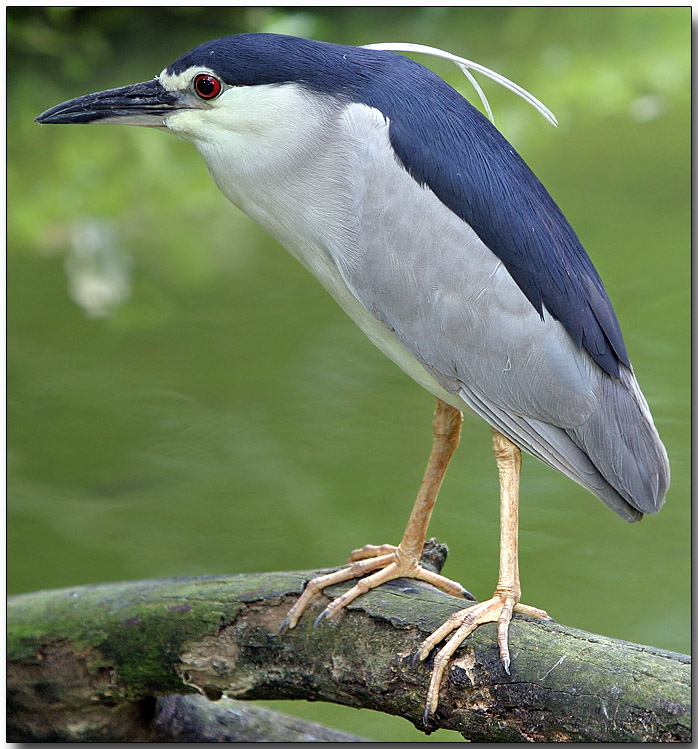
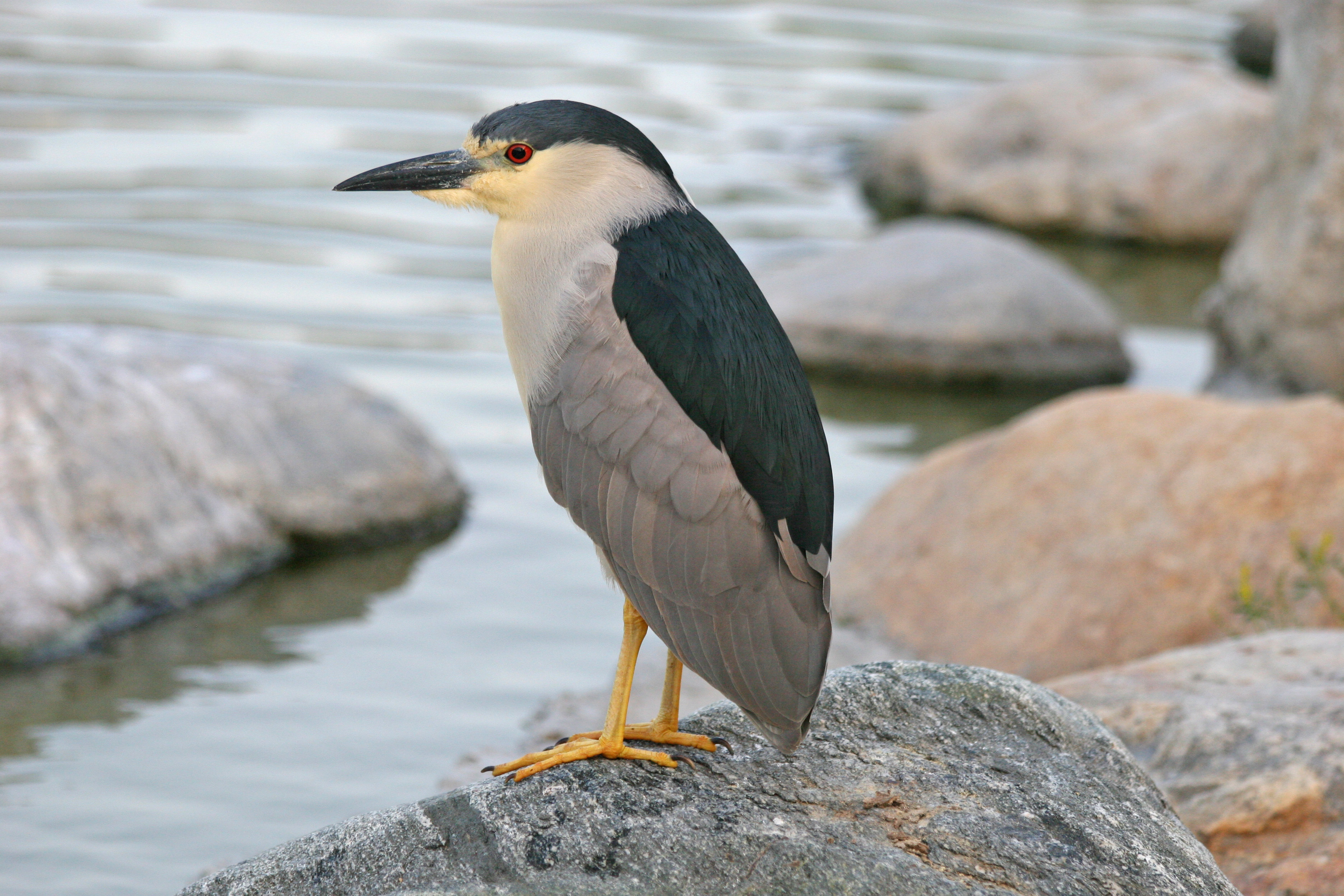
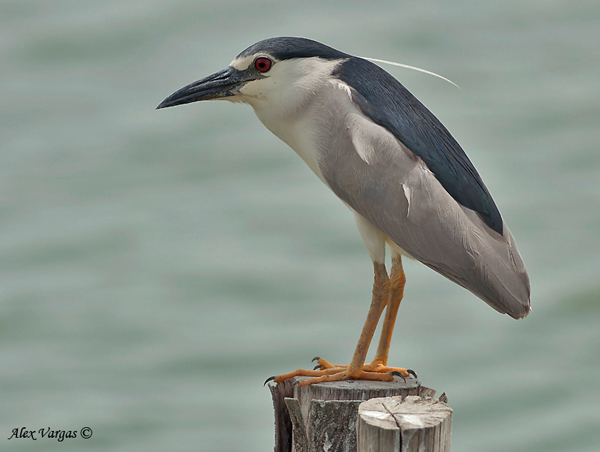
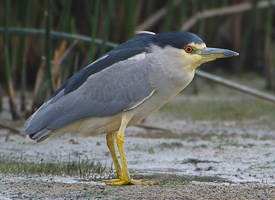
 Animalia Life
Animalia Life